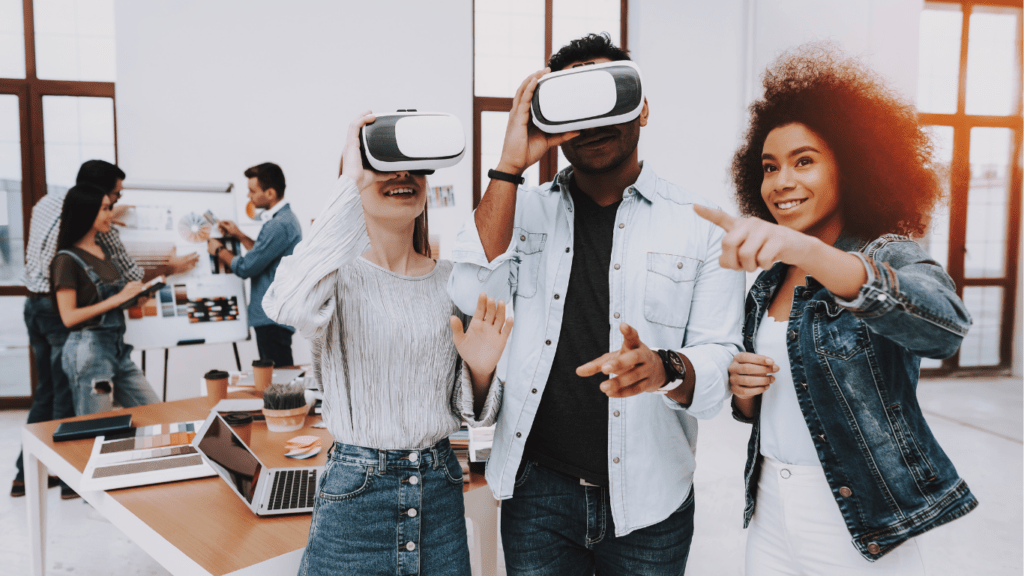Understanding Virtual Reality And Augmented Reality
Virtual Reality (VR) and Augmented Reality (AR) are two cutting-edge technologies transforming how we engage with the digital and physical world. These technologies use immersive experiences to change entertainment, work, and learning environments.
What Is Virtual Reality?
Virtual Reality creates completely immersive digital environments. Users interact with these environments using devices like VR headsets, motion sensors, and handheld controllers. This eliminates visual contact with the physical surroundings. Examples include VR games, architectural visualizations, and virtual field trips in education.
What Is Augmented Reality?
Augmented Reality overlays digital objects onto the real world, blending physical and virtual elements. Users access AR through smartphones, AR glasses, or apps. Unlike VR, it doesn’t replace reality but enhances it. Examples include AR-powered e-commerce apps, navigation systems with real-time overlays, and AR filters on social media.
| Aspect | Virtual Reality (VR) | Augmented Reality (AR) |
|---|---|---|
| Interaction Level | Fully immersive | Partially immersive |
| Devices | VR headsets, controllers | Smartphones, AR glasses |
| Environment | Replaces physical surroundings | Blends digital objects with reality |
| Applications | Gaming, training simulations, therapies | Retail, marketing, on-site guidance |
VR immerses users in digital environments, while AR enhances real-world interactions with virtual elements. Both technologies cater to unique applications, changing how we experience work and entertainment.
Applications In The Workplace

Virtual Reality (VR) and Augmented Reality (AR) offer transformative solutions in modern work environments. From productivity enhancement to collaborative innovation, these technologies streamline various processes.
Enhancing Productivity And Training
VR and AR improve professional training through immersive simulations. For instance, medical trainees use VR to practice surgeries in risk-free virtual environments. Similarly, AR-guided workflows assist manufacturing workers by overlaying step-by-step instructions on physical equipment, reducing errors and training time.
These solutions also increase task efficiency. In logistics, AR glasses provide real-time inventory data and optimized picking routes, resulting in faster operations. According to a study by PwC, VR-based training is four times faster than traditional methods for soft skills development.
Remote Collaboration
- VR and AR enhance remote team collaboration by simulating physical workspaces.
- I’ve seen companies use VR for virtual meeting rooms, where team members interact as avatars, fostering more engaging communication.
- AR tools, like Microsoft HoloLens, overlay data and annotations on shared projects, enabling real-time problem-solving.
- These technologies bridge the gap in industries requiring hands-on collaboration.
- Engineers can work on a machine virtually using AR, making adjustments and sharing insights regardless of their physical location.
Design And Prototyping
AR and VR simplify design and prototyping workflows. Architects use VR to create walkable 3D building models, allowing clients to experience structures before they’re built. In automotive design, AR displays let engineers visualize component assembly or test vehicle aerodynamics without creating physical models.
These applications reduce costs and development time. Instead of multiple physical prototypes, industries can rely on VR simulations for testing and optimizing designs, achieving precision while minimizing resource use.
Transforming Entertainment And Gaming
Virtual Reality (VR) and Augmented Reality (AR) are revolutionizing how people engage with entertainment and gaming. These technologies offer new ways to experience stories, games, and events, creating deeper connections and more memorable interactions.
Immersive Gaming Experiences
VR delivers unparalleled immersion by transporting users into digital worlds. Players use devices like headsets, haptic controllers, and motion tracking systems to explore 3D environments and interact with objects in real-time. Games such as “Half-Life: Alyx” and “Beat Saber” showcase VR’s potential by blending realistic physics, spatial audio, and engaging gameplay.
AR transforms gaming by integrating augmented elements into real-world spaces. Titles like “Pokémon GO” allow players to interact with characters within their surroundings using smartphones. This combination of virtual and physical play has shifted how games are developed and consumed.
Innovations In Media And Storytelling
VR offers creators the ability to craft interactive narratives that fully immerse viewers. Through platforms like Oculus Venues, users experience films and documentaries in 360-degree environments, where every angle of the scene becomes part of the story. This advancement blurs the line between media consumption and participation.
AR changes how stories unfold by overlaying multimedia content on real-world objects. Museums, for example, enhance exhibits by displaying augmented videos or 3D reconstructions when visitors scan artifacts with their devices. These dynamic interactions make storytelling more engaging and accessible.
AR And VR In Live Events
AR and VR redefine live events by offering interactive and immersive experiences. VR platforms such as Horizon Worlds host virtual concerts and festivals, enabling attendees to attend from anywhere while enjoying customized avatars and communal interactions. Events like Travis Scott’s virtual concert in “Fortnite” attracted millions, demonstrating VR’s reach.
AR enriches physical events with real-time data and visuals. At sports venues, apps overlay player statistics or replays on screens accessed through AR glasses. Fans at music festivals can use AR filters to capture and share augmented moments, combining entertainment with creative engagement.





